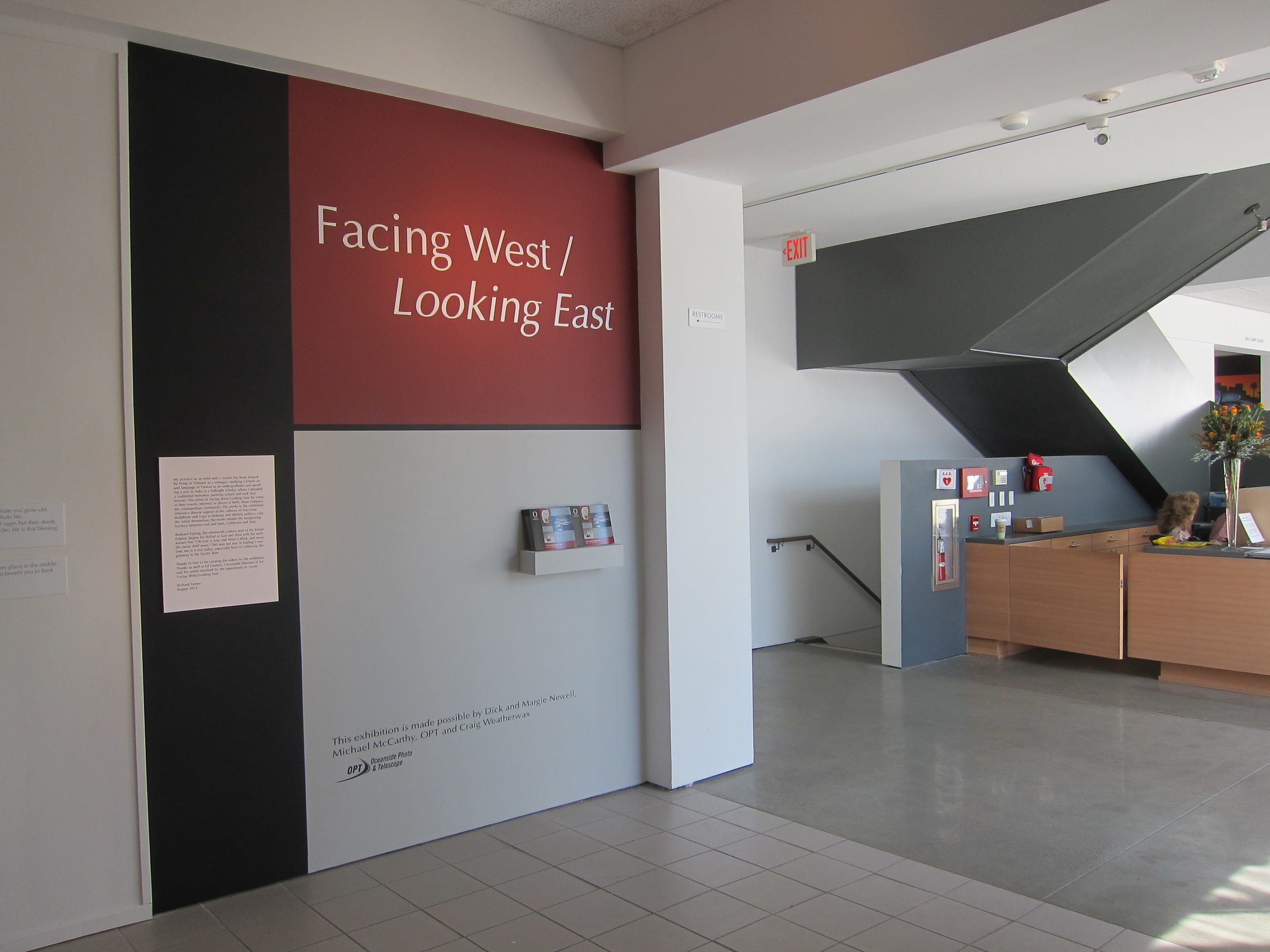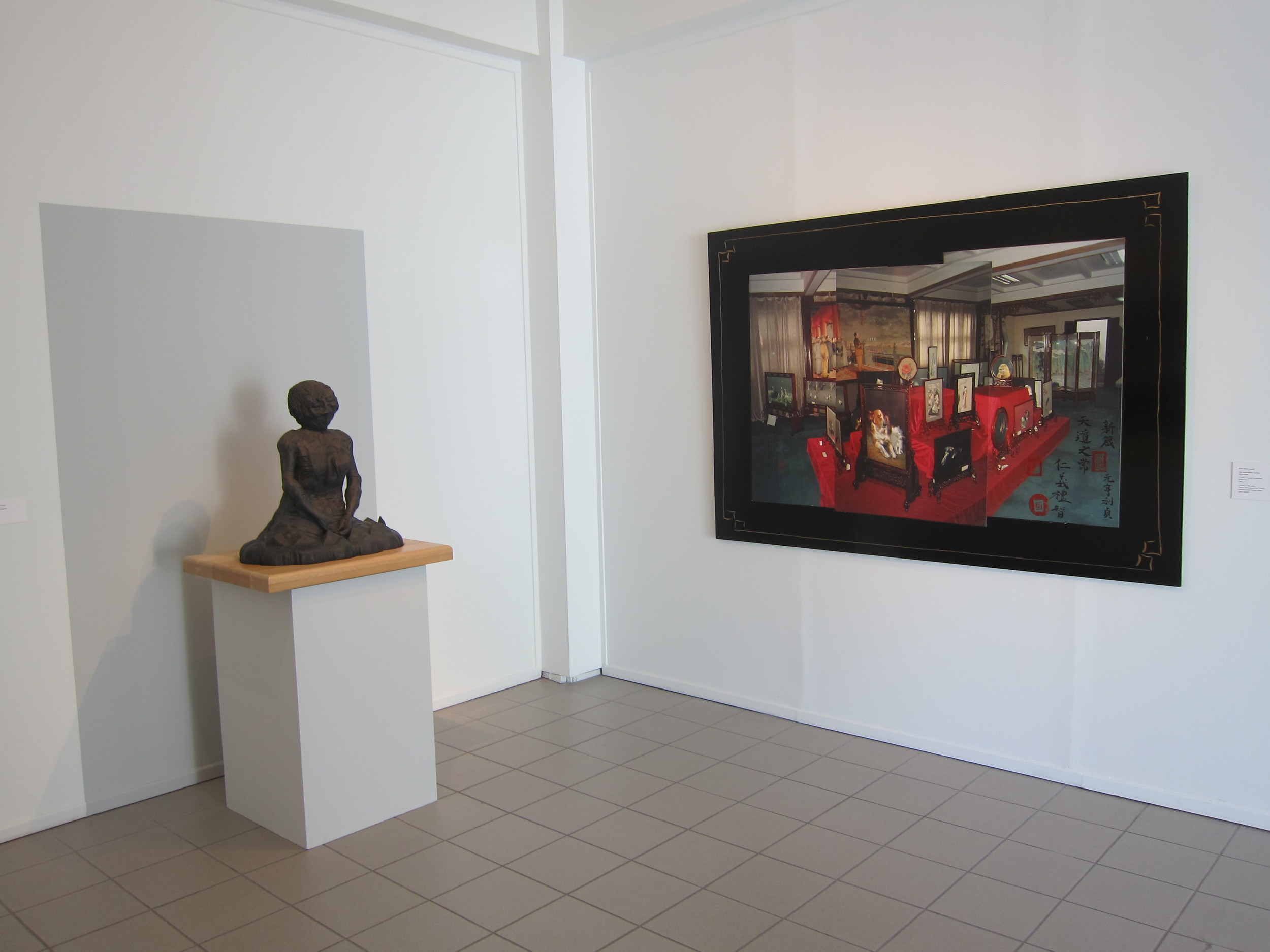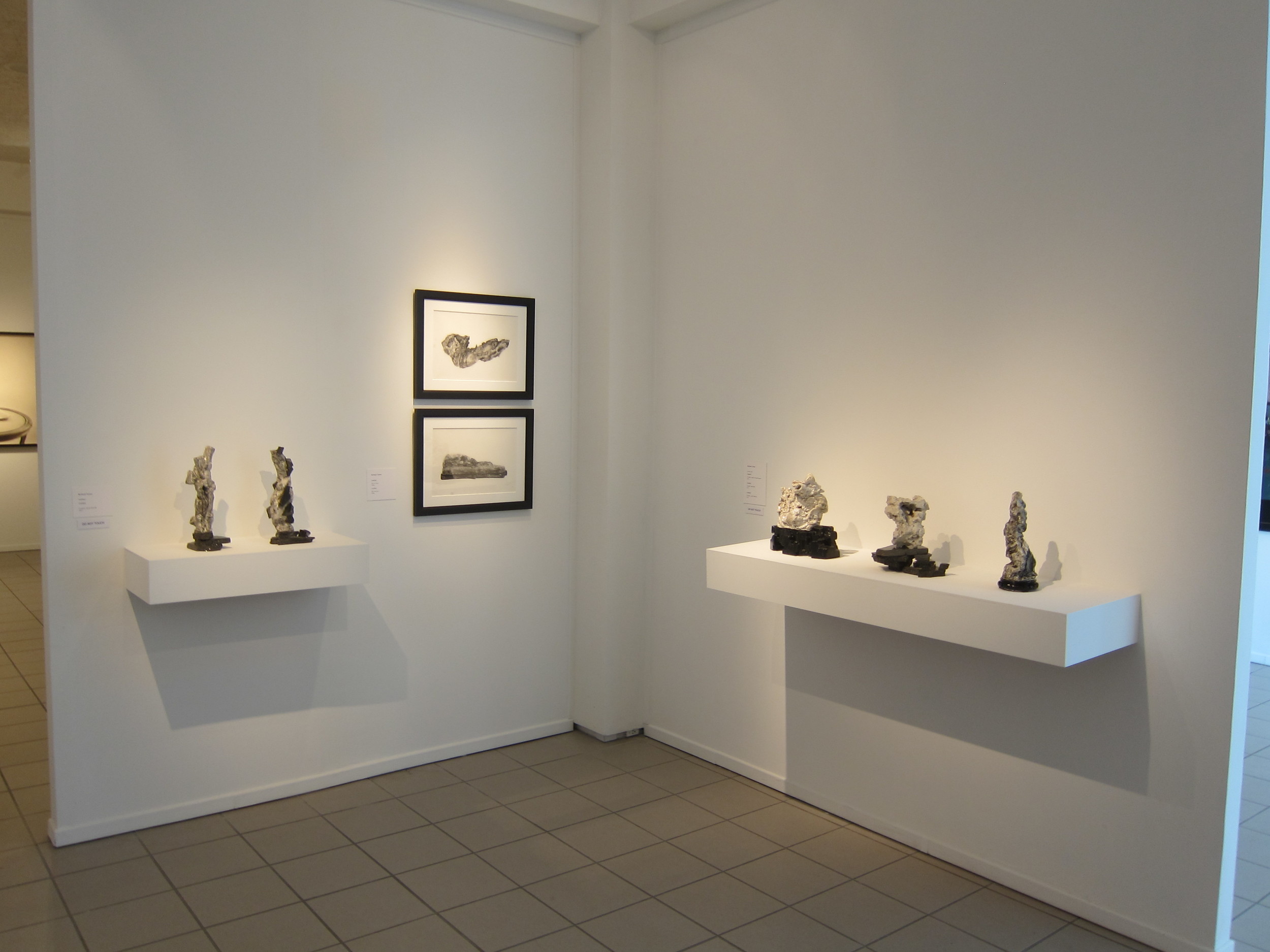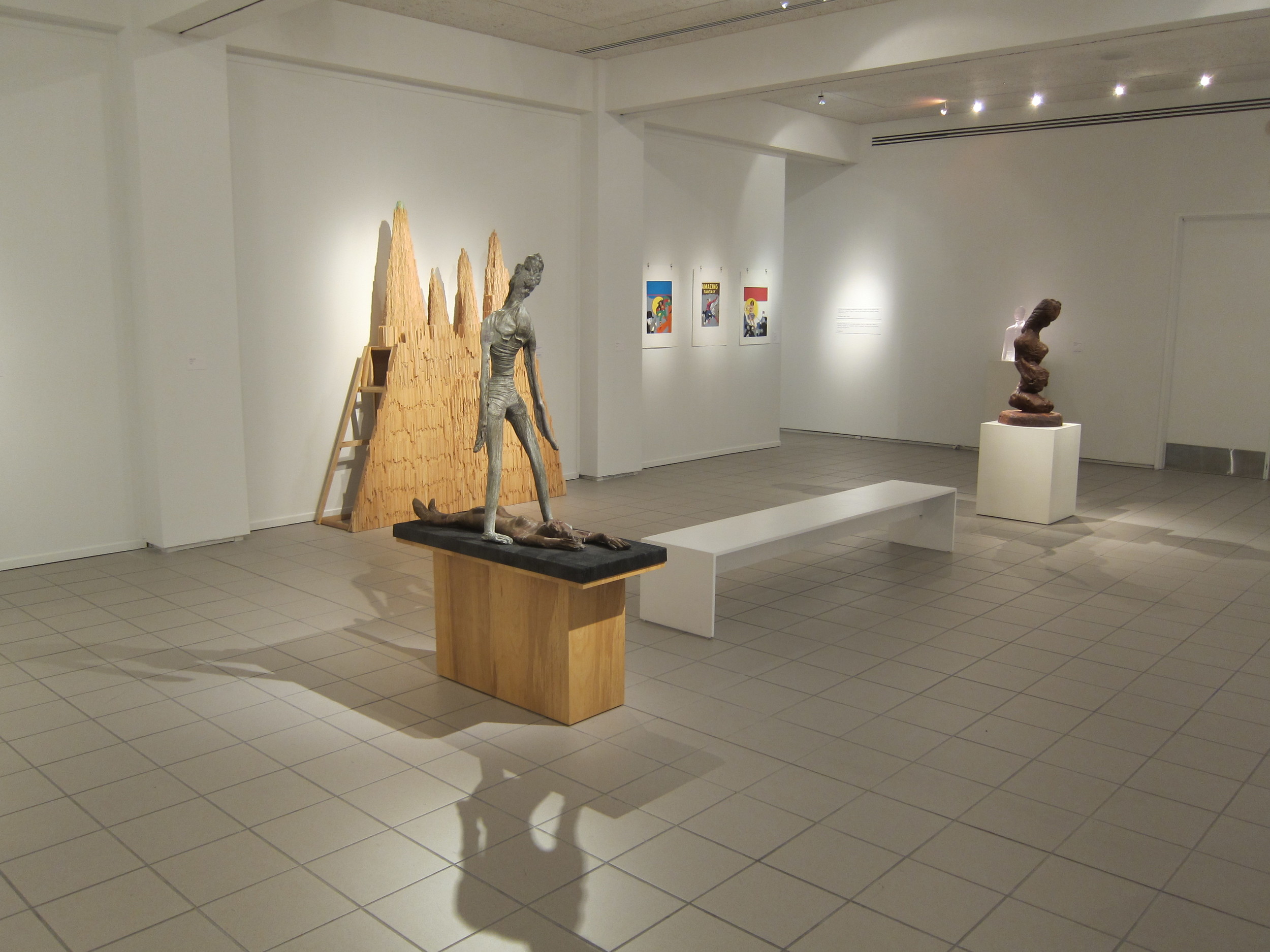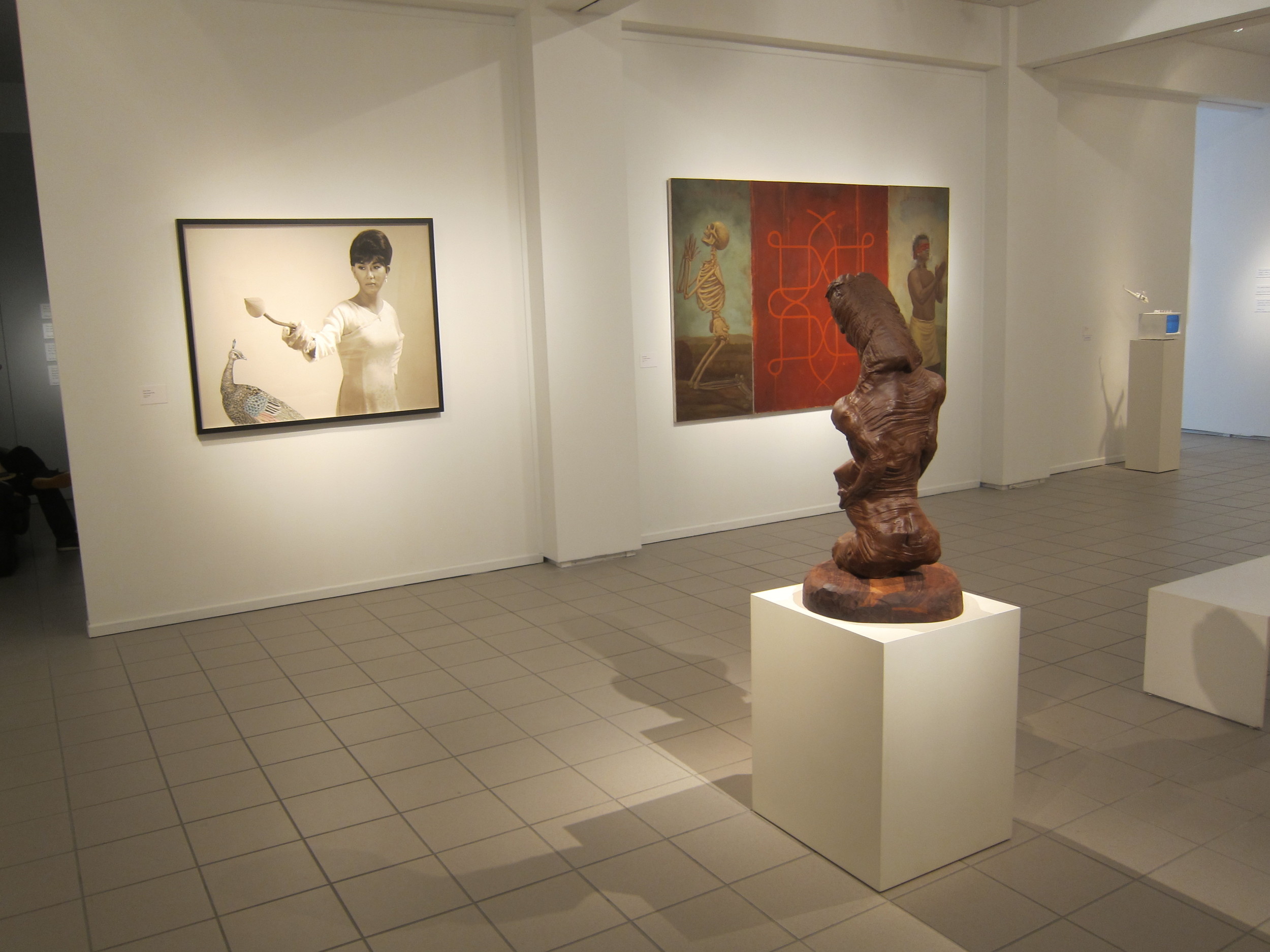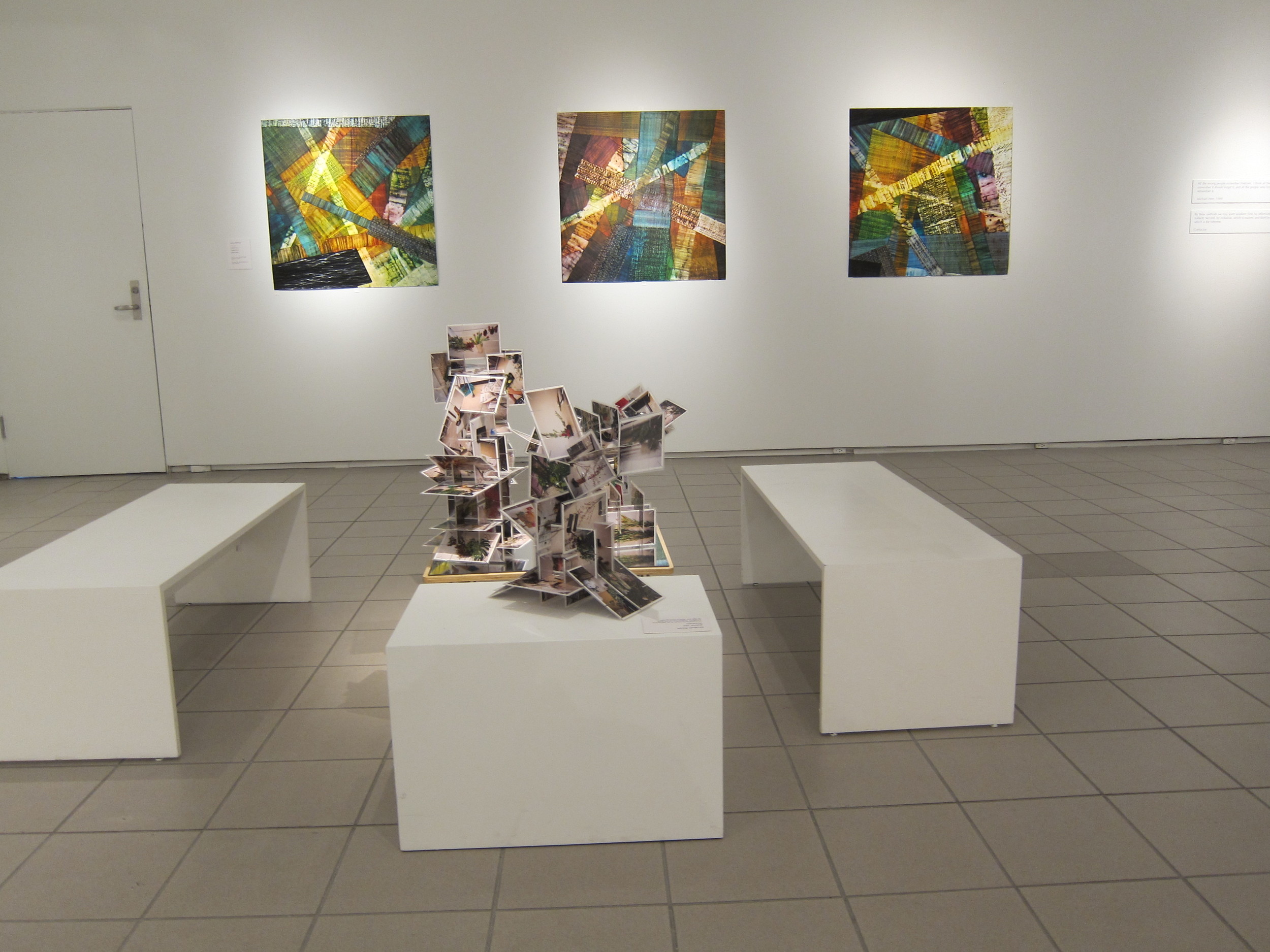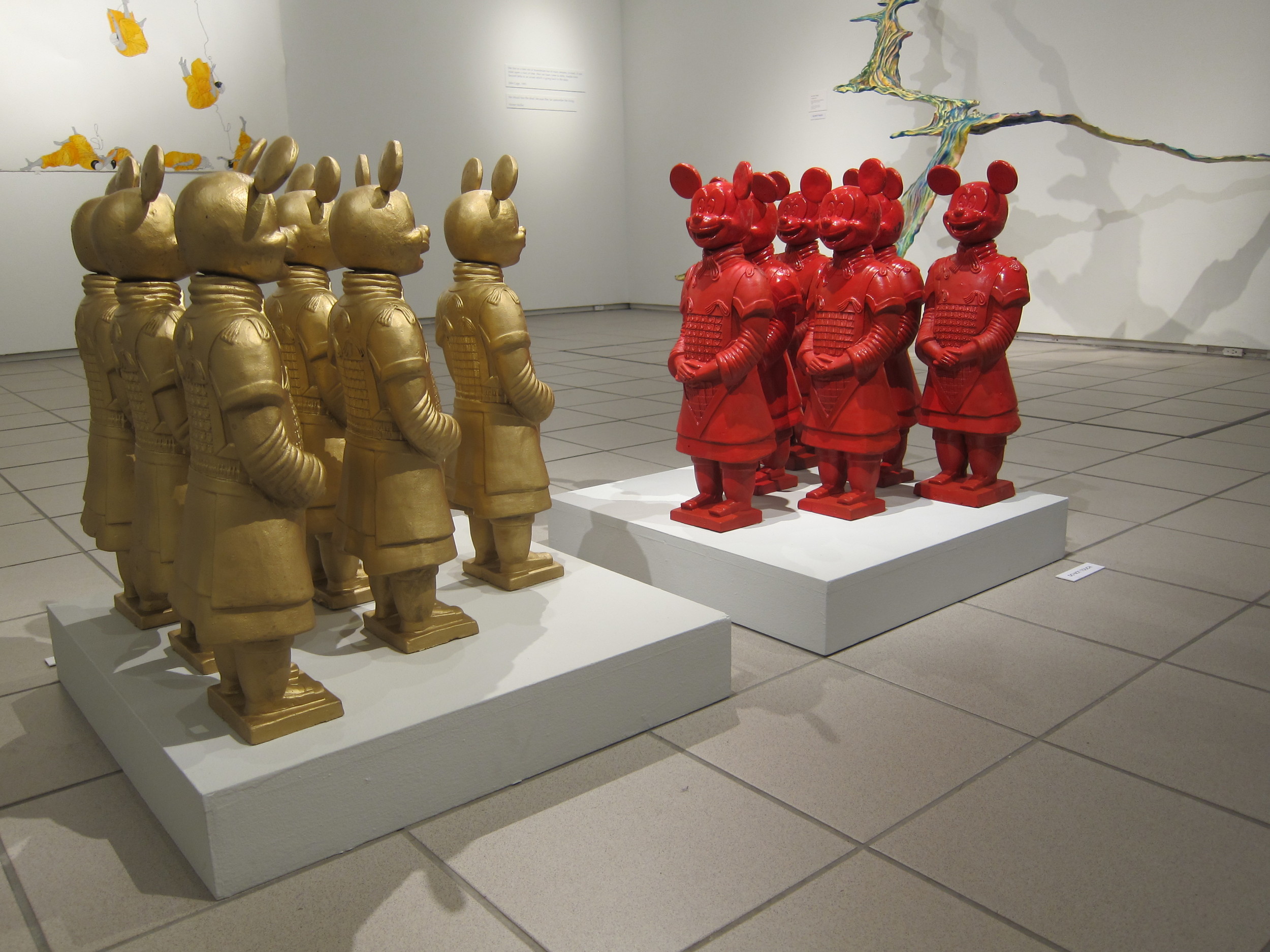Curator’s Statement
My practice as an artist and a curator has been shaped by living in Vietnam as a teenager, studying Chinese art and language in Taiwan as an undergraduate and spending a year in India as a Fulbright scholar, where I attended a traditional miniature painting school and took sitar lessons. The artists in Facing West / Looking East, by virtue of their travels, interests, or places of birth, share comparable cosmopolitan credentials. The works in the exhibition reference diverse aspects of the cultures of Asia from Buddhism and Yoga to ikebana and identity politics. Like the artists themselves, the works inhabit the burgeoning territory between east and west, California and Asia.
Rudyard Kipling, the nineteenth century poet of the British Empire, begins his Ballad of East and West with the well-known line “Oh East is East, and West is West, and never the twain shall meet.” This was not true in Kipling’s own time nor is it true today, especially here in California, the gateway to the Pacific Rim.
Thanks to Viet Le for curating the videos for the exhibition. Thanks as well to Ed Fosmire, the Oceanside Museum of Art and the artists involved for the opportunity to curate Facing West / Looking East.
Richard Turner, August 2012
Exhibition Essay
A lone figure trudges across the face of a sand dune lit by the glow of the rising sun. His battered felt hat and the bedroll slung over his right shoulder mark him as a wanderer. As he traverses the waves of sand his shadow grows longer. The landscape grows more expansive. The figure becomes proportionally smaller. Finally, crossing the ridge of a dune, he disappears into a flash of sunlight. It is Kwai Chang Caine the Chinese/American Shaolin monk played by David Carradine in the 1972-1975 television series Kung Fu.
Carradine’s hybrid character, Kwai Chang Caine might well serve as a foil for introducing the artists in Facing West/Looking East. Like Chang Kwai Caine these artists are, to one degree or another, citizens of two (or more) cultures. For some, this is a result of being displaced by colonialism. For others their dual citizenship is due to travel and/or immersion in the literature and film of the diverse cultures of Asia. For all, their hybrid identities, whether accidents of fate or willed choices, affirm a commitment to the artist as an individual who is free to embrace other cultures without denying his/her own.
In the Kung Fu television series, Kwai Chang Caine roamed the Old West confronting injustice wherever he found it, a sort of Chinese/American Lone Ranger. The frequent flashbacks to his childhood in the Shaolin monastery let the audience know that although Caine was in the West, he was not entirely of the West. So the artists in Facing West/Looking East share a cosmopolitan detachment from ideas of place and rootedness. Some of them move freely between California and their homelands, some travel regularly in Asia, all roam among continually evolving bodies of work.
The state of California, the end of the American frontier and the beginning of the Pacific Rim, is an ideal site for the wanderings of the artists in Facing West / Looking East. The population reveals no dominant narrative unless it is one of immigration. From Neolithic man crossing the land bridge from Asia through the Spanish explorers, the Gold Rush 49ers, the Chinese laborers, the Dustbowl Oakies to the Japanese, and later Vietnamese, Cambodians, Laotians, Koreans and Indians, there is no story that is typical. Each epoch, each people brought its own cultural heritage. It is little wonder that change is the only constant in a state that remains a gateway in the globalized 21st century.
Television legend has it that the set for the Shaolin monastery in Kung Fu was originally a set for the film musical Camelot. Such shape shifting is testimony to the ease with which California has assimilated the cultures brought to the state by successive waves of immigration. Our spiritual practices, cuisine, architecture, landscaping, literature, film and music have all been significantly enriched by the diverse cultures of Asia. California today is a place where a Hindu temple in Malibu, a Chinese garden in Pasadena and a vibrant Vietnamese community in Garden Grove are no longer anomalies but rather accepted and even expected components of the state’s Pacific Rim culture.
California today is a site of cultural heterogeneity that bridges the local and the universal. Like the state’s immigrant populace, the exhibition Facing West / Looking East does not have a dominant narrative. In the work of each individual artist one can find a reflection of aspects of the diverse experience that is contemporary California. Each artist possesses a distinct perspective on his/her relation to the cultures of Asia. From the direct to the oblique, works in the exhibition present a spectrum of responses to Asia and the Asian American experience.
Elizabeth Bryant’s pieces remind us of the tradition of Japanese arts that enrich California life – bonsai, gardens, viewing stones and flower arranging. It was, in fact, an ikebana class that was the point of departure for this body of Ms. Bryant’s work. Her interest in Chinese gardens has informed other bodies of her work. Jacci Den Hartog’s two pieces also find their origins in a study of Chinese gardens. First hand experience of the gardens in Xuzhou and an affinity for Chinese landscape painting ground Ms. Den Hartog’s work. Richard Turner’s pieces are likewise inspired by Chinese sources. His sculptures are part of his ongoing exploration of Gongshi, Chinese scholar’s rocks.
The point of entry to the work of Brian Doan and Aragna Ker is the politics of Southeast Asia and its legacy here in California. Mr. Doan’s works explore issues of identity using the personalities and events of Vietnam War. His photographs, which still evoke controversy within the Vietnamese community, remind us of a past that is still very much with us today. Aragna Ker, whose family fled Cambodia in the wake of the murderous Khmer Rouge regieme, juxtaposes images from superhero comic books with images of his family and of Pol Pot, the genocidal former ruler of Cambodia. Similarly, his sculpture evokes thoughts of both Dracula’s castle and the towers of Angkor Wat.
Sandeep Mukherjee’s paintings hint at the warp and weft of the fabrics used for Indian saris and can also be understood as referencing the Hindu concept of Maya, the veils of illusion that mask the loss that drives desire. In Mr. Mukherjee’s paintings abstraction serves to mediate between the layers of representation – the endlessly shifting veils. Tam Van Tran’s wall reliefs, with their combination of graceful organic forms and quirky recycled materials, find their origins in Mr. Tran’s interest in Buddhist ideas of space which he uses as a foil to test the boundaries between two and three dimensions, painting and sculpture.
Nancy Evans’ eccentric sculptures have their origins in her practice of yoga and her travels in India. For Ms. Evans, her sculptures are a means of understanding oneself by employing “the exotic and the primitive”. Buddhist iconography and the writings of Yukio Mishima inform Kara Tanaka's work. Her Dissolver spaceship sculpture is grounded in the transportation of the immaterial body in both reincarnation and space travel and her cowhide drawing references Buddhist tableau paintings of monks and saints who changed religious doctrine.
Bari Kumar’s work superimposes Hindu yantras over images from classical western figure painting. Layering of cultures, one atop another, recalls not only the milieu of Mr. Kumar’s native India, which was once part of the British empire, but his experience as an Indo American in California. Kim MacConnel’s multi media constructions speak to the viewer in the voice of the traveler, the tourist. Working from photographs that he has taken while traveling in Africa, India, China and Japan, Mr. MacConnel capitalizes on his status as an outsider to comment on the dialogue between tradition and popular culture. In her pieces referencing the terra cotta warriors of Xi’an, Lizabeth Rossof playfully interrogates the effects of globalization on traditional Chinese art. A second project, comprising a book and a video, provides a look at the world of the contemporary Chinese artists who make a living producing copies of western artworks.
Artist, academic, writer and curator Viet Le has curated a selection of video shorts for Facing West / Looking East entitled Chains of Love / Ties that Bind. The videos “ruminate on love and loss in the shadows of empire in modern-day Asia, post-World War II America, and colonial French Indochina. These experimental video artists challenge binaries between local and diasporic, East and West. They queer the divides between periphery and center; past, present and future. Working in the interstices of Cambodia, Viet Nam, Japan, Thailand, and the United States, the artists offer alternate visions of living on the ruins of modernity’s edge”. Videos by Studio Revolt (Anida Yoeu Ali and Masahiro Sugano) Tiffany Chung, Erin O’Brien, Jai Arun Ravine, Tina Takemoto and Hong-An Truong will be on view.
The DNA of the artists in Facing West / Looking East can be traced to California artists ranging from John McLaughlin, Morris Graves and Gordon Onslow Ford to Tyrus Wong, Isamu Noguchi and Masami Teraoka. Continuing the genealogical metaphor, Facing West / Looking East is the child of The Third Mind: American Artists Contemplate Asia at the Guggenheim Museum in 2009 and a first cousin to exhibitions such as One Way or Another and A New Cosmopolitanism. Contemporary California artists who look towards Asia are nearly as ubiquitous today as a Chai latte, Starbucks’ version of a traditional Indian beverage, and as much a part of the west as the tumbling tumbleweed, a plant native to Eurasia that was first introduced to the western United States in the 19th century.
As we interrogate the work in Facing West / Looking East, we might do well to remember the words of Kwai Chang Caine delivered in stilted and halting English over the opening credits “I do not seek to know the answers but to understand the questions.” Questions that the artists in this exhibition ask about what it means to make art in California today.
Resources
Chang, Gordon H., Asian American Art A History, 1850-1970, Stanford University Press, Stanford, CA., 2008.
Gaines, Charles, The New Cosmopolitanism: Preeminence of Place, catalogue essay for the exhibition A New Cosmopolitanism, California State University Fullerton, Fullerton, CA. 2008.
Machida, Margo, Reframing Asian America, catalogue essay for the exhibition One Way or Another, Asian American Art Now, Asia Society, New York, NY, 2006.
Stomberg, John, Re-Orienting Modernism, Brice Marden, Michael Mazur, Pat Steir, catalogue essay for the exhibition Looking East, Boston University Art Gallery, Boston, MA. 2002.
